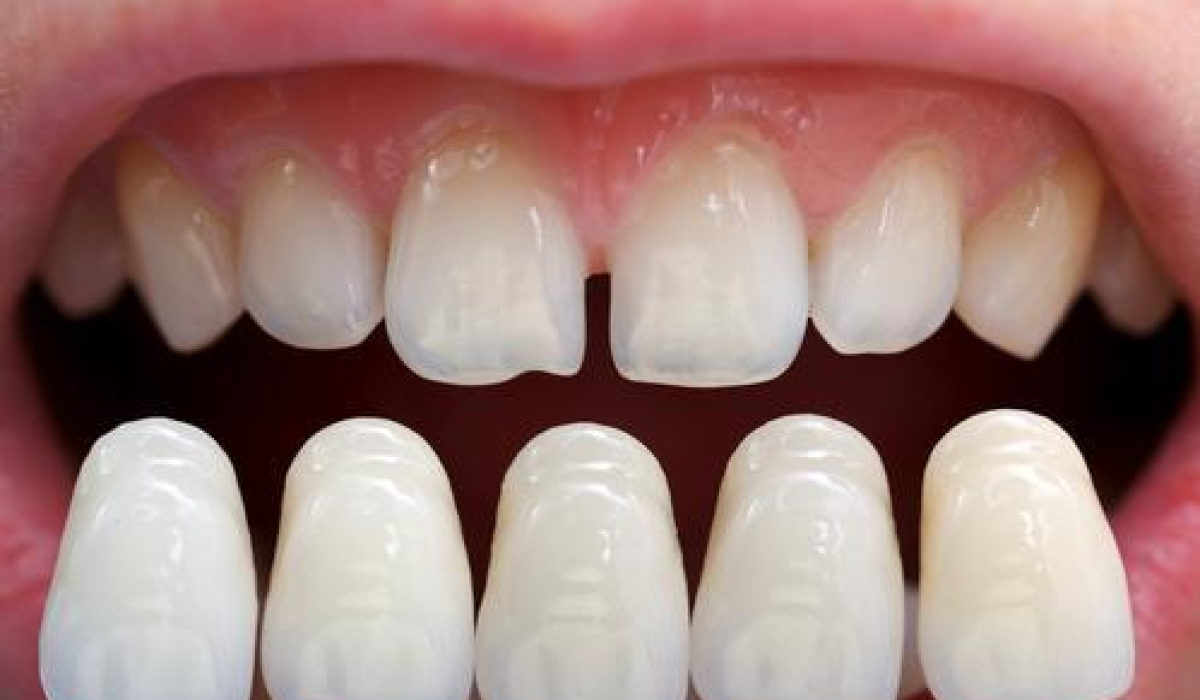Dental veneers are a fantastic way to transform your smile. They are especially great for people with cracked, chipped, or discolored teeth. Veneers provide a fresh, clean look and give long-lasting results. By opting for veneers, individuals can achieve an enhanced smile that goes beyond traditional dental fillings. This solution is ideal for those who want to quickly improve their appearance with a safe, non-surgical option. Let’s dive into how veneers work and explore their benefits in detail.
Understanding Dental Veneers
Veneers are thin, custom-made shells designed to cover the front side of teeth. They are primarily made from either porcelain or a composite resin material. Each material has its advantages. Porcelain veneers are known for their durability and resistance to stains, making them a popular choice. Composite veneers, on the other hand, offer affordability and ease of repair. Regardless of the material, the main purpose of veneers is to enhance the look of your teeth by concealing imperfections. When you learn how veneers work, you see how these shells beautifully blend with your natural teeth for a seamless smile.
Transformative Power: How Veneers Improve Your Smile (76 words)
Veneers can solve many dental issues like chips, cracks, gaps, and tooth discoloration. They are frequently applied to the top front teeth to give them a symmetrical appearance. For many, understanding veneers how they work offers a clear path to a better smile. When you know how veneers work, it becomes apparent that they provide a straightforward solution for improving appearance without extensive procedures or lengthy recovery times.
Types of Veneers: Choosing the Best Fit for You
Choosing between porcelain and composite resin veneers depends on individual needs. Porcelain veneers are praised for their durability and can last for many years. Meanwhile, composite veneers are less expensive and easier to fix if they get damaged. Consider both the expense and lifespan when choosing your veneers. Learning how veneers work includes understanding each type’s benefits. Additionally, how do veneers work on crooked teeth? They can sometimes help, but a consultation with a dentist is needed to decide the best treatment. Overall, the choice will vary based on your specific dental situation and aesthetic goals.
The Step-by-Step Process of How Veneers Work
The process of getting veneers involves several steps:
- Consultation: First, meet with your dentist. They’ll discuss your aesthetic desires and check your dental health. You’ll learn how veneers work and how they can improve your smile.
- Preparation: A small amount of enamel is gently removed from your teeth to make space for the veneer. Impressions are taken for accurate fit.
- Fabrication: The impressions are sent to a lab where your custom-made veneers are crafted to match your natural tooth color.
- Bonding: Once ready, veneers are applied to your teeth using a special glue that ensures they stick well.
- Final Review: Your dentist checks everything to make sure the fit is comfortable and looks good.
Knowing how veneers work through this methodical approach offers insight into their precision and the personalized care involved.
Guiding Patients: Benefits, Costs, and Downsides
Veneers offer immediate cosmetic results, which is why so many seek to learn veneers how do they work. Besides enhancing your appearance, they are resistant to stains from coffee or tea. However, costs can be significant, but considering their benefits, many feel it’s worth the investment. One downside, though, is the removal of enamel. This could cause sensitivity to hot or cold foods. Moreover, veneers need replacement over time, which adds to long-term expenses. Understanding both the upsides and drawbacks helps in deciding if veneers fit your needs and lifestyle, making decisions about your smile easier.
Long-Term Care for Your Veneers
Whether you choose porcelain or composite, caring for your veneers is essential. Maintain good oral hygiene by brushing and flossing daily. Avoid habits that could damage veneers, such as nail biting or chewing ice. Understanding how teeth veneers work includes knowing their lifespan—porcelain veneers last about 10-15 years, while composite lasts 4-8 years. Being careful extends their longevity. You’ll find that attentive care helps maintain not only the lifetime of the veneers but also the vibrant shine they give to your smile over the years.
Eligibility: Is Getting Veneers Right for You?
Veneers are a great option for those with healthy teeth and gums. But serious decay or periodontal issues might mean veneers how it works for others, not you. A personalized consultation helps explore if veneers fit your dental health and smile goals. Reviewing success stories with your dentist could offer insight. If you’re dreaming of a brighter smile but unsure if veneers are suitable, seeking professional advice is crucial. This ensures informed decisions and outcomes that match your expectations while also being conscious of dental wellness.



